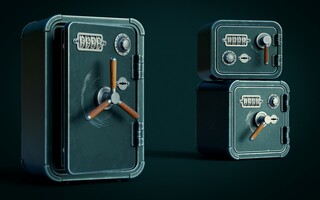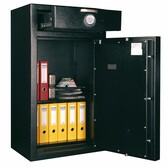It would seem that a safe is a simple item for which instructions are unnecessary. In fact, the locks are the most difficult to operate. Opening them, encrypting them or changing the code can be cumbersome for someone who has never dealt with a safe before.The safe itself also requires maintenance and regular cleaning. From this article you will learn how to open the different types of locks and how to maintain the safe.
A Hartmann Tresore safe – maintenance and cleaning instructions
Hartmann Tresore safes are robust devices covered by security certificates of various classes. All products come with a manufacturer's guarantee. If you want your safe to fulfil its purpose and the warranty protection to remain valid, you should follow the maintenance and cleaning procedures.
If a safe is misused or if it is deliberately damaged, the warranty will no longer apply. Before you buy, check what the terms and conditions are and which faults can be repaired under the agreement. This will allow you to avoid the expense of breakdowns and having to order service.
Remember that not every safe is designed to store hazardous substances, medicines or data carriers. Incorrect storage of hazardous items can damage the Hartmann Tresore safe.
The maintenance instructions mainly include guidelines for cleaning the paintwork with a damp cloth and mild detergents. Oils and caustic cleaners can damage the lock mechanism, bolts, hinges and paintwork. Use extraction petrol to remove larger dirt.
Instructions for a safe equipped with a mechanical lock
The manual for a safe equipped with a dial mechanism is not complicated, but simply twisting the cipher requires practice. All it takes is a small mistake when turning the dial and the door will not open.
The rotary knob lock is equipped with two dials, one fixed and the other movable. There are two dashes on the fixed dial. The one at 12 o'clock is for opening and the one at 11 o'clock is the dash for changing the combination of the cipher.
Most dial locks have a standard cipher which is represented by the combination: 10-20-30. The instructions for operating a safe with this lock are as follows:
● turn the dial counterclockwise until the number 10 is under the opening dash for the fourth time,
● then turn the dial clockwise until the number 20 is under the opening dash for the third time,
● turn the dial anticlockwise again until the number 30 is under the opening dash for the second time,
● the last movement is a clockwise turn until the lock opens.
Operating manual for a safe with an electronic lock with numeric keypad
Various types of safes can be equipped with a lock with a numerical keypad, including a gun cabinet, a home safe, a floor safe or a wall safe. The instructions for operating this lock are quite simple, however, some people have trouble with it.
Punching in the code is quick and the safe can be accessed by anyone who knows the code. Unfortunately, there is a danger of an unauthorised person suspecting the cipher. This lock does, however, require battery power, so it is a good idea to have a spare set of rechargeable batteries nearby in case it runs down.
Numeric keypad locks are different but the way to open most mechanisms is the same. The operating manual for a safe with an electronic lock is to simply enter a code and confirm it with an enter.
Changing the password can be more problematic. If you want to modify the cipher, follow the instruction manual, as different models of locks have different procedures for changing the code.
Read further: Changing the code on your safe. 5 facts you need to know
Operating instructions for a safe fitted with a biometric lock
A biometric lock is a mechanism that is opened using a fingerprint. This solution is very convenient and secure. There are no worries that an outsider may suspect the code, and the opening takes place immediately after the fingerprint reader reads it.
Unfortunately, this lock also has its drawbacks. It requires power from a mains socket, so in the event of a power failure you will have to use a revision, i.e. an emergency opening with a key.
The downside is also that both the finger and the reader must be clean when opening. All it takes is a little dirt and the lock will not open. If you work in a mechanical workshop or have frequent contact with grease, choose a different lock.
It is also important to have clear fingerprints. People who play stringed instruments and come into contact with corrosive substances often have unclear fingerprints, so they should consider choosing a different lock.
As you can see, the instructions for using a safe and lock are not that difficult. The most important thing, however, is to choose the right mechanism to suit your needs. Don't wait and order a safe with the most suitable lock for you today.
You may be interested in: How to open a safe? Ways of opening different locks





